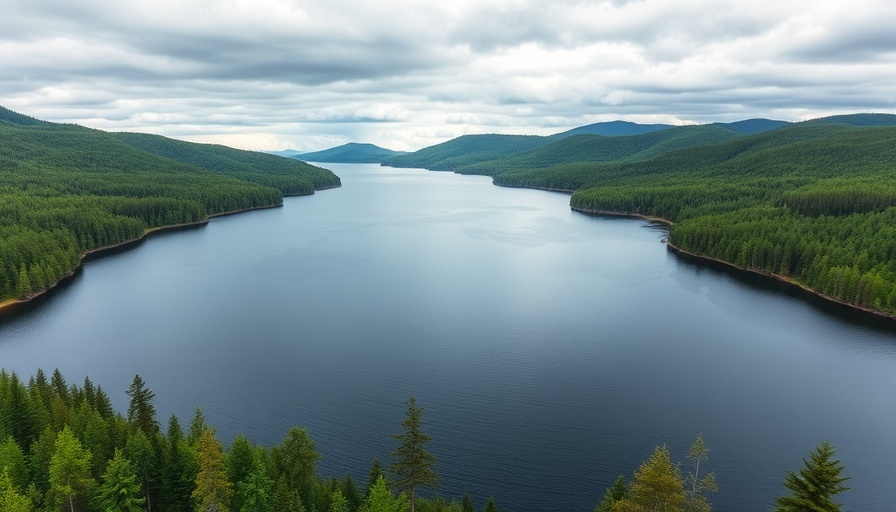
Wilderness at Risk: The Unfolding Battle for the Boundary Waters
Ah, the Boundary Waters—America’s hidden gem nestled in northern Minnesota, a haven for kayakers, campers, and the occasional philosophical musings about how nature is everything humans are not: majestic, serene, and untamed. But hold your paddles, folks! The serenity of these waters faces some serious threats that could turn this tranquil paradise into a construction zone faster than you can say "campsite reservation."
Senator Lee's Proposal: Tactical Infrastructure in Paradise?
That’s right, Republican Senator Mike Lee from Utah wants to make a little “upgrading” by amending the Wilderness Act of 1964 to allow “tactical infrastructure” near wilderness areas, like the Boundary Waters Canoe Area Wilderness. Yes, you heard that right. Think fences, walls, surveillance towers—the kind of stuff you’d find in a sci-fi movie, not a serene lakeside! Lee’s bill could allow for the construction of roads, airports, and other marvels of human ingenuity—all under the guise of national security. But let’s be honest, no one was trying to sneak into Canada on a paddleboard last I checked.
A Historic Perspective: Why We Fought So Hard for Wilderness
For over a century, the Boundary Waters has enjoyed various forms of protection. From early environmental movements to the establishment of the Boundary Waters Canoe Area Wilderness Act in 1978, this region has been preserved against the encroachment of modern development, driven by generations of advocates who believed that some places in nature should be left undisturbed. Imagine the first pioneers of this movement, likely canoing and arguing about the value of wilderness while hoping they wouldn’t run into a tree.
The Public’s Voice: Voices Around the Campfire
Did you know that 74% of Americans support public lands? It’s like the majority of people agree that nature is great! And the outdoor economy is thriving—$1.2 trillion strong, no less. Yet, here we are faced with folks in Washington who seem to prioritize mining over majestic moose sightings. Conservationists are tirelessly advocating against proposals like Senator Lee’s while trying to rally the public at events like the Rally for the Boundary Waters, believing firmly that public pressure can keep the wilderness wild.
Echoes from the Past: The Mining Threat
Mining remains one of the gravest threats to Boundary Waters, akin to setting up a hotdog stand at a vegan convention. The risks of copper-nickel mining include pollution that could imperil the watershed—an area where anglers, campers, and wildlife enthusiasts come together to enjoy the pristine surroundings. Somehow, nobody puts the word “sulfide” next to “clean” without raising eyebrows.
The Cautionary Tale of Twin Metals
The Twin Metals project serves as a cautionary tale of the mining industry's relentless attempts to revitalize outdated leases. If reinstated, these leases could create significant environmental impacts, opening the door to a “mining free-for-all” in one of Minnesota’s most cherished landscapes. Talk about swapping wilderness beauty for industrial blight!
The Science Behind the Brawl: Environmental Insights
Scientists warn that copper-sulfide mining near the Boundary Waters could put the entire ecosystem at risk. Environmental reviews are critical, but proposals like H.R.978 would throw that all out the window—literally! Imagine a Starbucks next to your favorite fishing hole, just because someone determined that the fish liked espresso.
Mobilizing for Protection: An Army of Advocates
Groups like Friends of the Boundary Waters are not standing by idly like ducks waiting for a good puddle. They’re on the front lines, ready to fight through legislation, litigation, and a grassroots citizen action network to safeguard this national treasure. Let’s face it; if a bunch of outdoor-loving citizens can’t keep these lands wild, who can?
Conspiring Against the Wilderness: Voices of Concern
The worries about these aggressive mining proposals are twofold: the potential environmental devastation and the political maneuvering happening in D.C. It’s the kind of bureaucratic ballet that would make even the most dedicated anglers shake their heads. And while lawmakers are scrambling to play their parts, real-life implications loom large over Minnesotans and adventurers alike.
Conclusion: Stand Up for the Wilderness You Love!
Now’s the time to let your voice be heard! If you cherish the pristine wilderness of the Boundary Waters as much as a good cup of hot cocoa on a chilly evening by the lake, it’s your moment to act. Engage with lawmakers, sign petitions, participate in rallies, and let’s keep those robots and bulldozers away from our precious lakes and forests. Wilderness is worth fighting for—like that last piece of pie at Thanksgiving, you don’t just sit there and hope someone else saves it for you!
 Add Row
Add Row  Add
Add 




Write A Comment